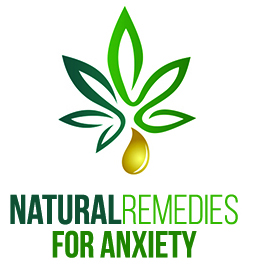Breathing Techniques
The heart pounding, hands sweat and tremble, and a weight invades the chest and knots the throat, preventing us from breathing properly, and letting us believe that it is impossible to calm or get around the crisis. Yet breathing is the key, the solution to the problem of rising anxiety. It can help us stop the anxiety attack and find calm. Breathing too fast causes hyperventilation and worsens the stress state of the body, but slow, controlled breathing helps to normalize our mind and body.
Breathing is our most easy anti-stress available to us all times, Breathing well is an art that is affordable and whose effects are immediately felt! Focusing on your breathing is a very effective way of calming your body and mind, driving away dark thoughts and refocusing your ideas on the present. When practicing breathing exercises, always focus your attention on this one. Pay attention to the movements of your body when you breathe.

Abdominal breathing
Breathing is not only done by the nostrils but also by the belly. Long forgotten, this part of the body can indeed radically change your way of doing things, and provide life-saving benefits. By practicing “abdominal breathing” you will increase your breathing amplitude by more than 70% (against 30% for thoracic breathing). This mechanism, natural in babies and favored by many opera singers, allows you both to better oxygenate your brain, improve your physical performance (better evacuation of toxins), and improve your well-being general by reducing stress.
In the office or at home, sit in your chair and place your hands on your stomach. The goal is to feel the comings and goings of the latter. Inhale for three seconds through the nose by swelling your stomach without forcing, block the air for three seconds and then slowly exhale through the mouth, leaving the belly become flat again. The good rhythm? Three times a day or more, if you feel the need to relax.
Pranayama to release vital energy
For Orientals, to breathe is to circulate in oneself the vital energy, the breath of life (the qi) that connects us to the universe. Mastering one’s breath goes well beyond the oxygenation of the lungs.
Symbolically, this corresponds to opening up one’s body and one’s soul, a form of meditation. Hence the importance of “just” breathing in the practice of yoga, tai chi chuan or qi gong. The exercises of pranayama, the Indian breath art that calms the mind to achieve inner peace, are interesting for developing one’s perception of the benefits of breathing.
lie down, put one hand on the belly, the other on the chest. Inhale slowly, mindfully. First fill the lower belly, then the whole, the lower chest, and the top of the bust. Exhale starting by emptying the chest, then the upper belly, and finish at the bottom. Repeat. To practice 5 to 10 minutes a day.
Jacobson’s relaxation
“This progressive muscle relaxation is indicated for people who have trouble letting go and hyperactive tendencies,” says Anne-Françoise Chaperon. It allows a deep relaxation starting from a voluntary contraction of the muscles. It is indeed easier to feel the relaxation when one has experienced tension.
Position: Begin by practicing abdominal breathing. During the inspiration, contract a muscle (back, shoulders, neck, jaw) then block the breathing while keeping it contracted for a few seconds. Focus your attention on the feeling of tension. Then exhale slowly, slowly releasing the contracted muscle, and observe the relaxing sensation of loosening the muscle. Repeat the exercise several times, always coupling inspiration / contraction and expiration / relaxation.
To contract the back, bring your shoulder blades back to one another by sending your shoulders back. For the shoulders, raise them as high as possible. For the neck: Tuck your chin as if to touch your chest. For the jaw: Tighten your teeth hard by pushing your jaw against your teeth.
Releasing tension
Here is another exercise that brings a deep relaxation, relaxing tension exercise to every body part.
While sitting or standing, with closed eyes, inhaling by putting a part of the body in tension such as the right arm for a few moments, the lungs full, release the tension on the exhalation and then listen to its feelings, ie to integrate during a short pause the messages of this part of the body. Continue the exercise by doing the same thing with the left arm, the two arms, the legs and finally the whole body.
These small relaxation exercises can be practiced easily no matter when and where you are.
To live better with sophrology is to learn how to become an “actor” in managing one’s stress and not to undergo it. Everyone has to test what suits them best or alternate according to their feelings.
.
